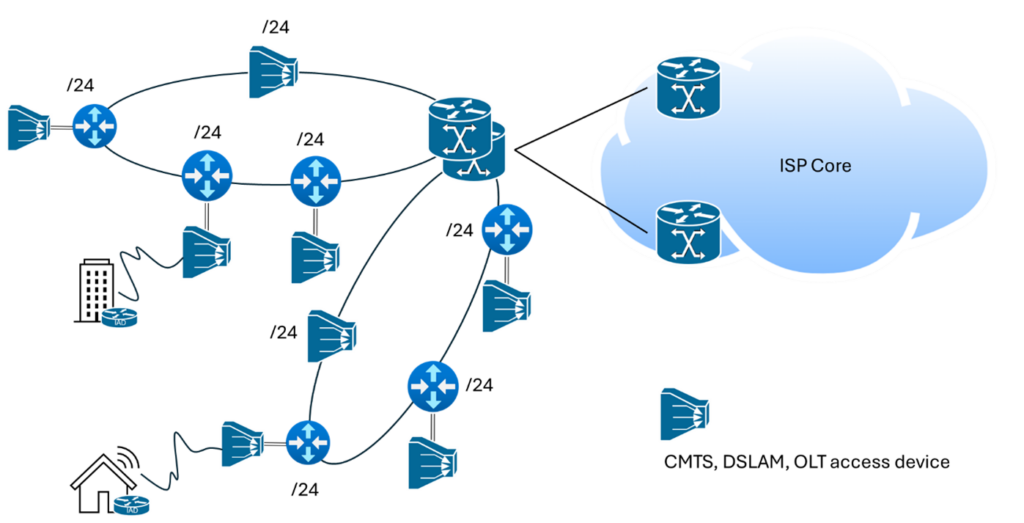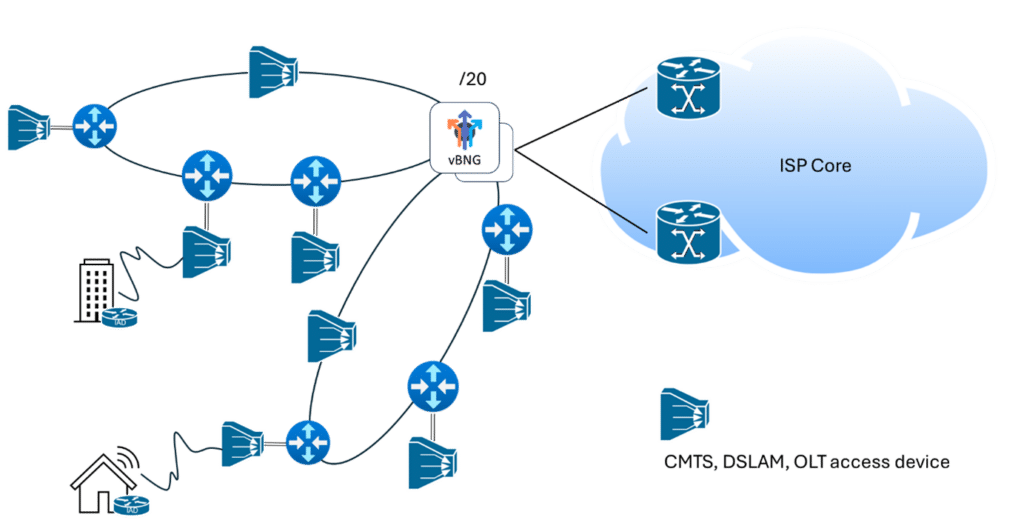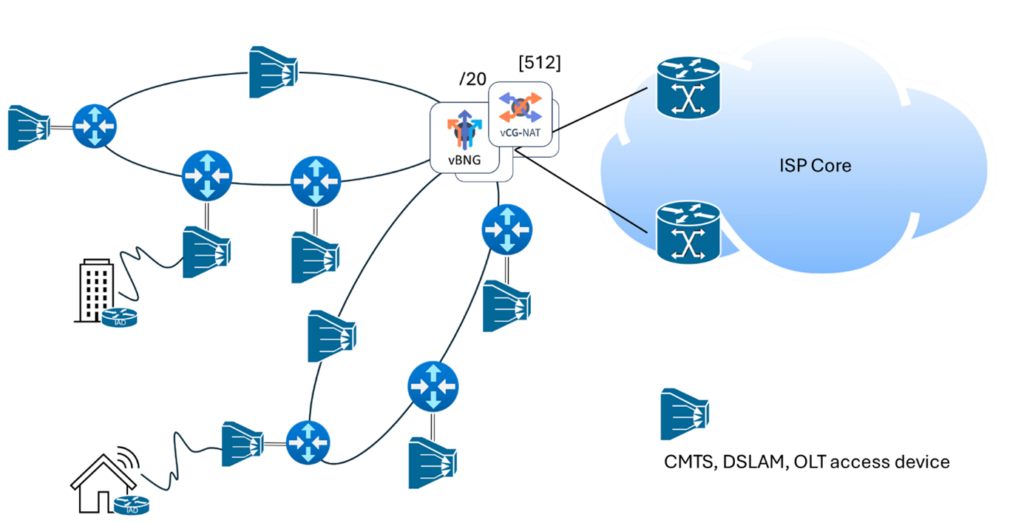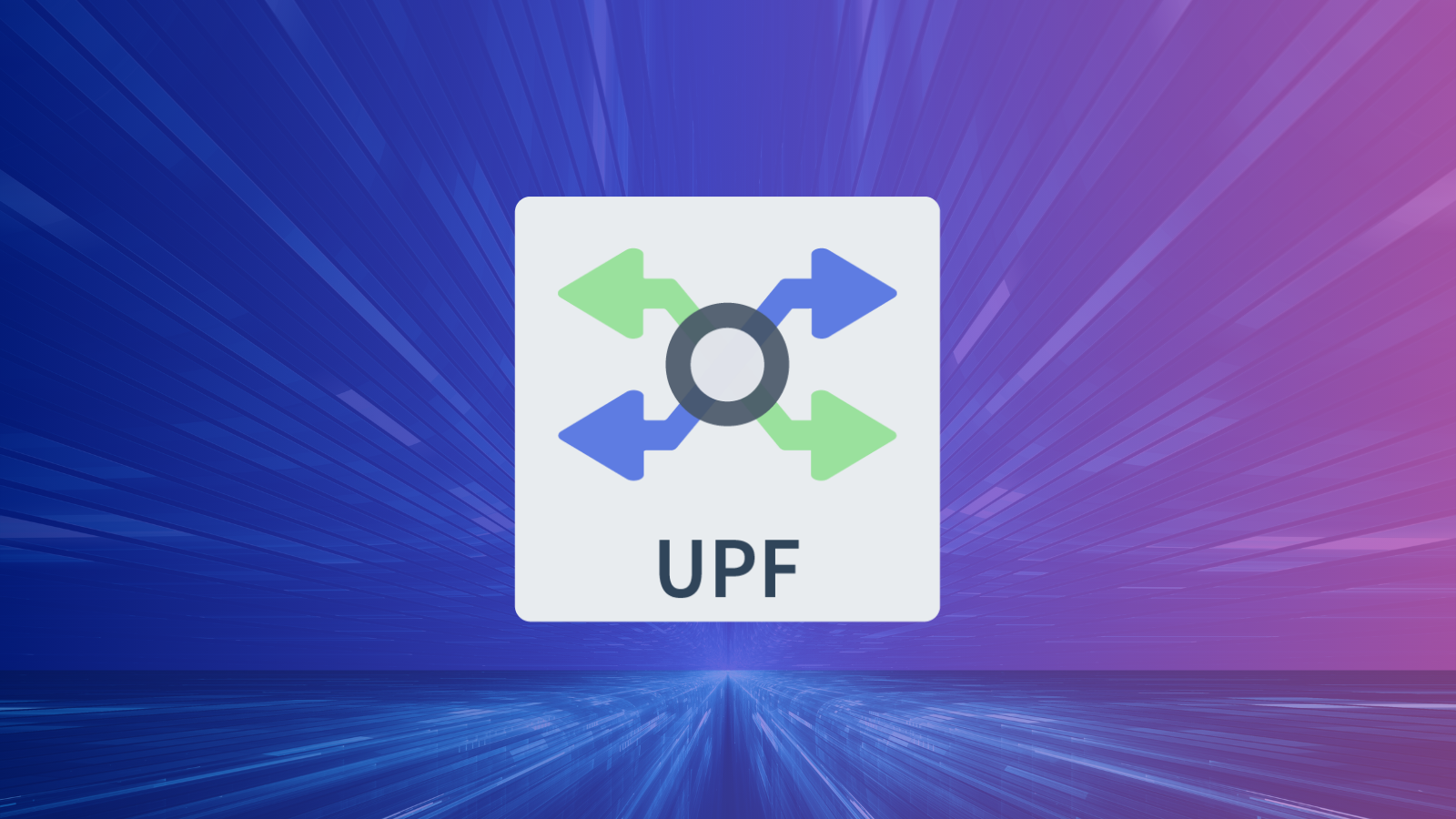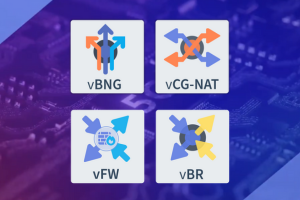Optimizing Public IPv4 resources using 6WIND vBNG and vCGNAT
Introduction
IPv4, with its 32-bit address format, supports around 4.3 billion addresses. Initially sufficient, the explosion of internet-connected devices has rapidly exhausted these addresses. Internet Service Providers (ISPs) are the biggest owners of public IPv4 addresses blocks as they provide enterprise and home access to the Internet, along with services such as IPTV and IP telephony. Three major issues associated with IPv4 are IP address depletion, increased network complexity due to Internet routing table growth, and lack of end-to-end connectivity because of Network Address Translation (NAT) used at Customer Premise Equipment (CPE) or Internet Access Device (IAD).
Nowadays, small and medium-sized ISPs face three main pain points with IPv4 addressing: the limited number of available addresses, the difficulty in managing and allocating addresses, and the high cost of purchasing additional IPv4 address space, which increase over time. Consequently, IPv4 block conservation becomes crucial. This blog post provides comprehensive insights into how 6WIND could ease ISPs IPv4 address management and optimization introducing its virtual Broadband Network Gateway (vBNG) and virtual Carrier Grade NAT (vCGNAT) products in their backhaul network.
ISP IPv4 Address Life Cycle Management without BNGs
The current ISP backhaul network relies on CMTS, DSLAM and OLT type of access devices to manage subscriber connectivity. These devices can provide a layer 2 connection from the CPE or IAD to a router that acts as their IP anchor point. Sometime these access devices can also serve directly as the layer 3 anchor point for subscribers, acting as their IP default gateway. From an IP management perspective, ISPs need to provision an IP block in advance on each of these access devices, which could number in the hundreds or thousands within a network. Dividing an IP macro block into multiple IP micro blocks and allocating these micro blocks to the access devices in advance is inefficient because many public IPv4 addresses are lost in that split and allocation. The ISPs are provisioning in advance the micro blocks because they don’t know which access device will acquire a new subscriber. This phenomenon results in a “waste” of public IPv4 addresses, often leading to a ratio of 4 public addresses being used per subscriber, which is far from optimal for ISPs with limited critical resources. This inefficient provisioning often prevents ISPs from acquiring new customers due to the lack of available IPv4 addresses, potentially forcing a hasty transition to IPv6.
Figure 1: Public IPv4 micro block, non-optimized provisioning
In the above diagram each router directly attached to an access device is getting a /24 micro block provisioned, allowing an ISP to acquire a maximum of 253 subscribers. Whenever the maximum number of subscribers is reached, a new micro block is provisioned. In live networks, ISPs observe that the number of connected subscribers is highly unbalanced among the different access devices making the overall IPv4 address macro block not being used to its full capacity.
Benefits of 6WIND virtual BNG
Using 6WIND virtual BNG helps ISPs achieve a Public IPv4 address per subscriber ratio close to 1:1. By positioning the virtual BNG at a “upper” level, ISPs can acquire subscribers across any access devices saving precious Public IPv4 addresses.
Figure 2: Public IPv4 micro block, optimized provisioning
In the above diagram, each access device, and its directly connected router act as a layer 2 node. The subscriber’s IP default gateway is the virtual BNG, on which a /20 IPv4 address block (still micro) is provisioned. Because of its positioning, the /20 IP address block is used in a more efficient way limiting the over-provisioning of IPv4 addresses in the network. In this topology, the virtual BNG serves as the enforcement point for IPv4 address block provisioning, reducing the number of devices, on which IP blocks are provisioned, and minimizing the risk of making configuration errors.
Besides the efficient IP address management, since 6WIND virtual BNG has the subscriber “knowledge”, subscribers can be authenticated, bandwidth per subscribers can be controlled, and security can be enforced on a per-subscriber basis if necessary.
6WIND virtual CGNAT for enhanced IPv4 Address Management
Achieving a 1:1 usage ratio between IPv4 addresses and subscribers is a good accomplishment but may not suffice to overcome the public IPv4 address depletion. Using 6WIND virtual CGNAT helps ISPs continue acquiring new subscribers and growing their business despite the limited availability of public IPv4 addresses.
In the below diagram the virtual BNG function can be combined with the virtual Carrier Grade NAT function which allows a single Public IPv4 to be shared by multiple subscribers. In this scenario, subscribers are addressed with private IPv4 addresses managed by the BNG and given a portion of ports of a public IPv4 address managed by the CGNAT to access the IPv4 Internet. With a port block size of 512 ports configured on the CGNAT, a single Public IPv4 address can be shared by up to 124 subscribers, significantly increasing the subscriber/IP ratio.
Figure 3: 6WIND virtual CGNAT – NAT444
In figure 3, a first level of source NAT44 is done by the IAD/CPE which are getting a Private IPv4 address provisioned by 6WIND virtual BNG. Then a second level of source NAT44 is performed by the 6WIND virtual CGNAT which makes the overall NAT solution called NAT444.
Conclusion
ISPs are facing challenges in managing the overall public IPv4 address depletion which can impact their business growth. The Public IPv4 address allocation management needs to be efficient enough to mitigate the loss of precious addresses. 6WIND products help ISPs save costs by managing their IP block efficiently using 6WIND vBNG, while also future-proofing their public IPv4 block usage with the 6WIND vCGNAT.
If you’d like to find out more, evaluate the solution for free or contact us.
